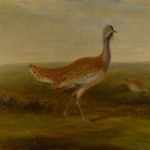The Wiltshire landscape from chalk hill figures to prehistoric remains - artworks from the Museum’s collection.
Echoing ideas of England’s heritage landscape pioneered across the 18th and 19th centuries, 20th century artists introduced new ways of appreciating chalk hill figures and prehistoric remains. This exhibition at Wiltshire Museum will highlight some of these works, held in the Museum’s own collection.
Between the First and Second World Wars, less travelled ways became routes to the past. The surrounding countryside developed creatively charged mysteries, evocatively punctuated by furrows, signposts and rolling cloud shadows. The absorbingly ambiguous was witnessed beyond hedgerows, railed fencing and wire strung between posts. Much was encountered and recorded as if noticed for the first time, if not at the point of being permanently lost from view.
Artists who would become household names were joined by educators, the tutored and the self-taught. The gateways to their timeless explorations, the customs and backwaters of sleepy villages and slower paced market towns. The diversity of architectural materials, shapes and styles, meeting with sequences of decline, weathering and repair, lent to the impression of all history being represented across the centuries.
Ways of Seeing Wiltshire offers opportunities to engage with these relatively recent times when, alongside the adoption of an ‘idealized’ English rural landscape, considering and interpreting the distant past and its unfamiliar cultures became increasingly significant. It was, after all, the evolving way in which the natural, built, and working heritage was being witnessed, reimagined and remembered, that shaped the ever extending present’s sense of attachment and belonging.
The exhibition will be on display in the Museum from mid-May until August. See some of the works in the exhibition in our Virtual Gallery.
The exhibition is curated by Brian Edwards.








